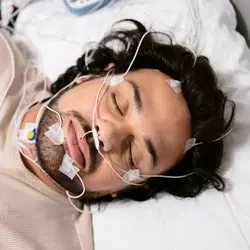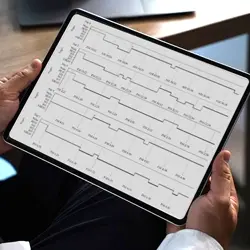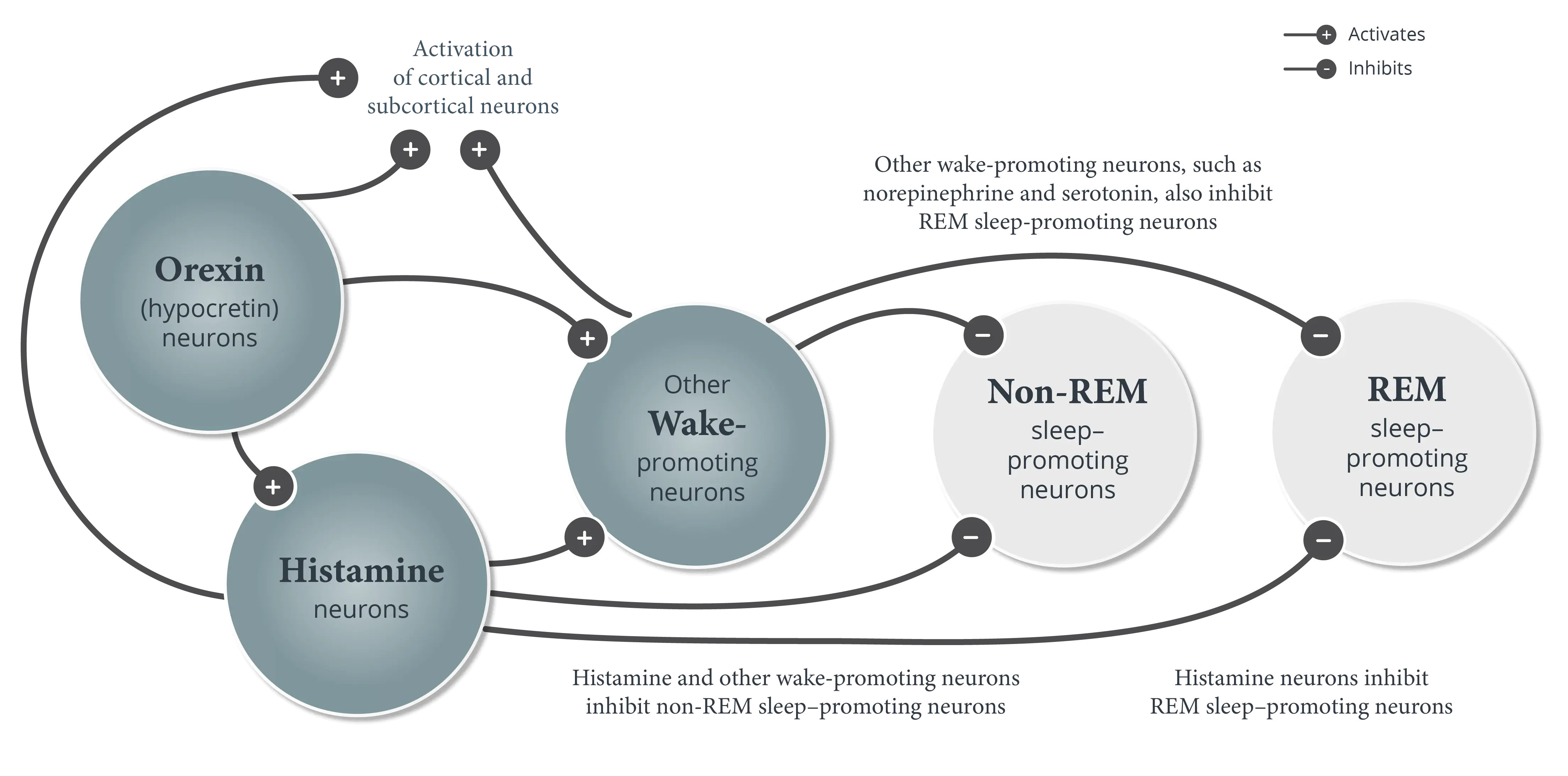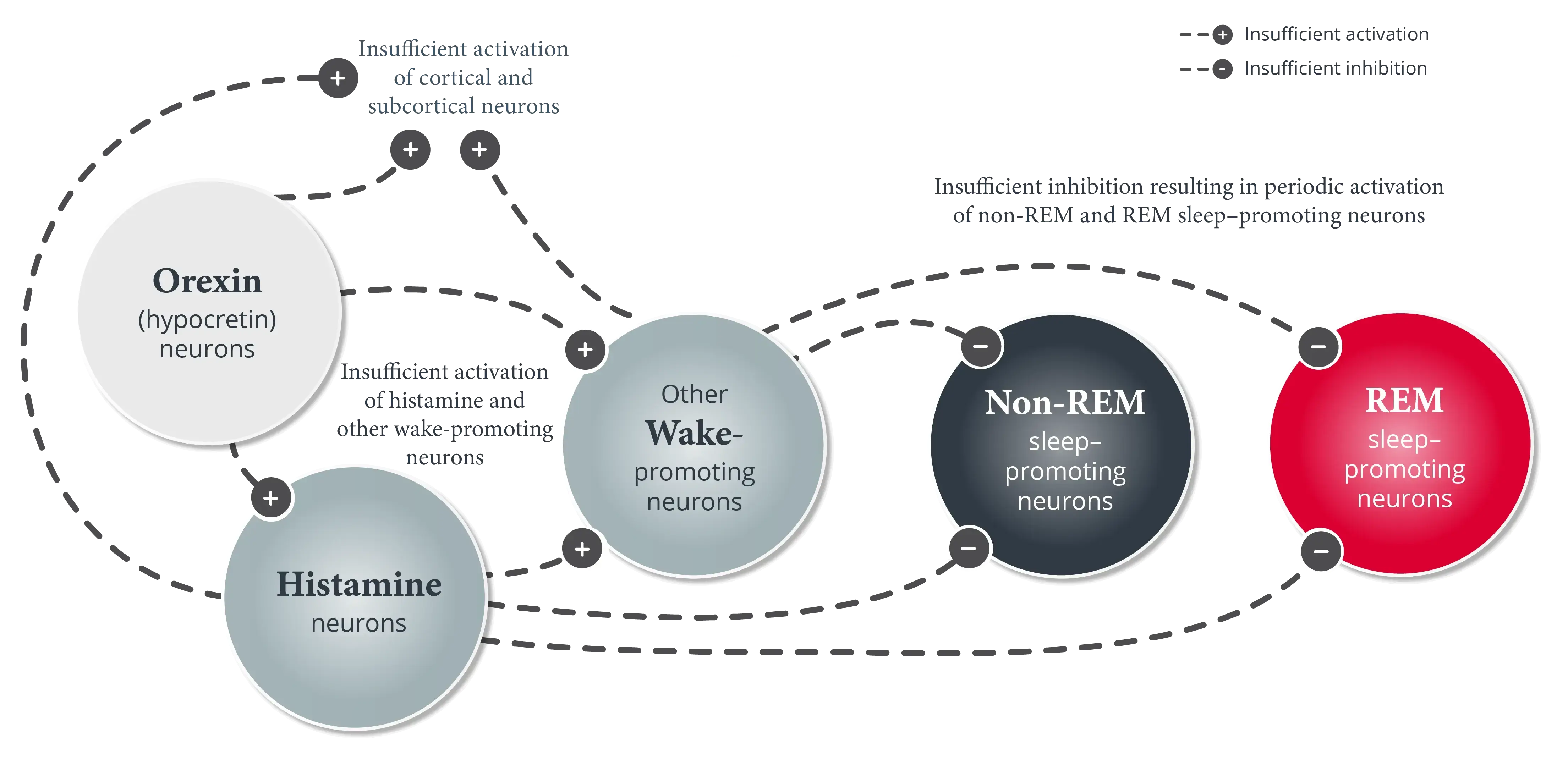

Symptom Manifestations in Adult Patients With Narcolepsy
This content was developed using the International Classification of Sleep Disorders, third edition, text revision (ICSD-3-TR) and other materials.
Symptom Manifestations in Adult Patients With Narcolepsy
This content was developed using the International Classification of Sleep Disorders, third edition, text revision (ICSD-3-TR) and other materials.
Overview
The symptoms of narcolepsy can manifest differently among patients.1
Excessive daytime sleepiness (EDS) is the cardinal symptom of narcolepsy, present in all patients. It is usually the first and most disabling symptom. EDS can have a serious impact on multiple areas of function and can predispose patients to potentially life-threatening domestic, occupational, and vehicular accidents.1
Patients may experience EDS in different ways, which can make it challenging to identify in clinical practice. In addition to unintended lapses into drowsiness or sleep, patients can experience an inability to stay alert during the day or lapses in concentration. Patients may not specifically mention “sleepiness” but rather explain that they are “tired” or “fatigued,” or that they “have no energy.”1,2 They may report struggling with memory or decision-making, or having trouble following a conversation.1-3
Sleepiness is more likely to occur in sedentary or monotonous situations that do not require active participation, such as riding in a car or watching television. However, in some cases patients may even experience sudden lapses into sleep in unusual situations, such as while eating a meal.1


Up to 80% of patients with narcolepsy may experience automatic behaviors associated with microsleep episodes (split-seconds of sleep that occur during the normal wake period).1,4-7 Patients may not recall being asleep and may continue the activity they were performing prior to the episode.7
Patients with narcolepsy type 1 experience cataplexy, defined as more than one episode of generally brief (<2 minutes), usually bilaterally symmetrical, sudden loss of muscle tone with retained consciousness that is triggered by strong emotion.1


The presentation of cataplexy can vary between patients in terms of age of onset, muscle groups affected, range of emotional triggers (eg, laughter, anger, surprise, emotions associated with laughter), frequency, and intensity. For example, some patients may have <1 episode per month whereas others may experience >20 per day.1
Although not present in all patients with narcolepsy, additional symptoms in some patients include disrupted nighttime sleep, hypnagogic or hypnopompic hallucinations, and sleep paralysis, all of which can add to the impact of narcolepsy on patients.1
References
- American Academy of Sleep Medicine. International Classification of Sleep Disorders. 3rd ed, text revision. American Academy of Sleep Medicine; 2023.
- Ahmed IM, Thorpy MJ. Clinical evaluation of the patient with excessive sleepiness. In: Thorpy MJ, Billiard M, eds. Sleepiness: Causes, Consequences and Treatment. Cambridge University Press; 2011:36-47.
- Thorpy M, Morse AM. Reducing the clinical and socioeconomic burden of narcolepsy by earlier diagnosis and effective treatment. Sleep Med Clin. 2017;12(1):61-71.
- Lividini A, Pizza F, Filardi M, et al. Narcolepsy type 1 features across the life span: age impact on clinical and polysomnographic phenotype. J Clin Sleep Med. 2021;17(7):1363-1370.
- Bassetti C, Aldrich MS. Narcolepsy, idiopathic hypersomnia, and periodic hypersomnias. In: Culebras A, ed. Sleep Disorders and Neurological Disease. Marcel Dekker; 2000:323-354.
- Knudsen S, Jennum PJ, Alving J, Sheikh SP, Gammeltoft S. Validation of the ICSD-2 criteria for CSF hypocretin-1 measurements in the diagnosis of narcolepsy in the Danish population. Sleep. 2010;33(2):169-176.
- Ahmed I, Thorpy M. Clinical features, diagnosis and treatment of narcolepsy. Clin Chest Med. 2010;31(2):371-381.
- Anic-Labat S, Guilleminault C, Kraemer H, Meehan J, Arrigoni J, Mignot E. Validation of a cataplexy questionnaire in 983 sleep-disorder patients. Sleep. 1999;22(1):77-87.








